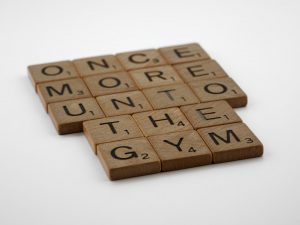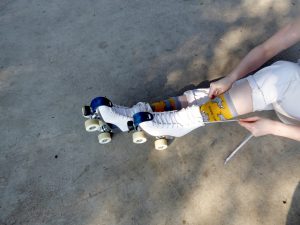Kickstart Your Fitness Journey: Adult Activity Guide
Kickstart your fitness journey with our Adult Activity Guide. Discover activities tailored for adults and transform your health today!
Introduction to Adult Activity
Understanding Adult Activity
Adult activity encompasses a wide range of pursuits that individuals engage in during their leisure time, work, or as part of their daily routines. These activities can be physical, mental, or social in nature, and are essential for maintaining a balanced and fulfilling lifestyle.
Engaging in regular adult activities can lead to improved physical health, enhanced mental well-being, and a stronger sense of community and belonging.
Types of Adult Activities
Adult activities can be broadly categorized into several types, including physical activities, such as sports and exercise; mental activities, like reading and puzzles; and social activities, such as group outings and community events. Each type offers unique benefits and can cater to different interests and preferences.
For instance, physical activities help improve cardiovascular health and build strength, while mental activities can enhance cognitive function and reduce stress.
Benefits of Engaging in Adult Activities
Participating in adult activities provides numerous benefits that contribute to overall well-being. Regular physical activity is known to reduce the risk of chronic diseases, improve mood, and boost energy levels.
Mental activities, on the other hand, can enhance memory, concentration, and problem-solving skills. Social activities foster connections with others, reducing feelings of loneliness and isolation, and promoting a sense of belonging.
Challenges and Considerations
Despite the benefits, there are challenges associated with maintaining regular adult activity.
Time constraints, financial limitations, and lack of access to resources can hinder participation. Additionally, personal motivation and finding the right balance between different types of activities can be challenging.
It is important for individuals to identify their interests and set realistic goals to overcome these obstacles.
Encouraging Participation in Adult Activities
To encourage greater participation in adult activities, communities and organizations can offer accessible programs and resources. Providing affordable options, creating inclusive environments, and promoting awareness of the benefits can motivate individuals to engage more actively.
Encouraging a supportive network of family and friends can also play a crucial role in fostering a culture of active participation.
Types of Adult Activities
Physical Activities
Physical activities for adults encompass a wide range of exercises and sports designed to improve physical health and fitness. These activities include gym workouts, running, cycling, swimming, and yoga.
Engaging in regular physical activities helps in maintaining a healthy weight, improving cardiovascular health, and enhancing overall well-being.
Group sports like soccer, basketball, and tennis not only provide physical benefits but also promote social interaction and teamwork. Many adults find joy and motivation in participating in community sports leagues or fitness classes, which offer structured environments to pursue physical fitness goals.
Mental and Cognitive Activities
Mental and cognitive activities are crucial for maintaining brain health and enhancing cognitive functions.
Activities such as puzzles, chess, and strategic board games challenge the mind and improve problem-solving skills. Engaging in these activities regularly can help in delaying cognitive decline and improving memory.
Additionally, learning new skills or hobbies, such as playing a musical instrument or learning a new language, stimulates the brain and fosters continuous personal growth.
These activities not only provide mental stimulation but also offer a sense of accomplishment and fulfillment.
Social Activities
Social activities play a vital role in enhancing emotional well-being and building strong interpersonal relationships. Participating in social clubs, community events, or volunteer work provides opportunities for adults to connect with others and build supportive networks.
These interactions can reduce feelings of loneliness and improve mental health.
Social activities also include attending cultural events, such as concerts, theater performances, and art exhibitions, which provide cultural enrichment and opportunities to engage with diverse communities. These experiences can broaden perspectives and enhance social awareness.
Creative and Artistic Activities
Creative and artistic activities offer adults an outlet for self-expression and creativity.
Engaging in activities such as painting, writing, or crafting allows individuals to explore their artistic talents and express emotions through various mediums. These activities can be therapeutic and provide a sense of relaxation and stress relief.
Joining art classes or workshops can also foster a sense of community among like-minded individuals who share similar interests.
This can lead to collaborative projects and the exchange of ideas, further enriching the creative experience.
Benefits of Adult Activity
Physical Health Improvements
Engaging in regular physical activity can significantly enhance physical health in adults. It helps in maintaining a healthy weight, reducing the risk of chronic diseases such as heart disease, diabetes, and certain types of cancer.
Regular exercise also strengthens bones and muscles, improving overall physical endurance and flexibility.
Moreover, physical activity boosts the immune system, making adults less susceptible to common illnesses. It also aids in maintaining healthy blood pressure and cholesterol levels, contributing to a longer, healthier life.
Mental Health Benefits
Adult activity is not only crucial for physical well-being but also plays a vital role in mental health.
Regular exercise is known to reduce symptoms of anxiety and depression, providing a natural mood boost. Physical activity triggers the release of endorphins, often referred to as the body’s natural painkillers, which can lead to feelings of happiness and relaxation.
Additionally, engaging in physical activities can improve sleep quality, enhance cognitive function, and increase self-esteem, all of which are critical components of mental health.
Social Interaction and Community Engagement
Participating in group activities or sports can significantly enhance social interaction and community engagement.
This is particularly beneficial for adults who may feel isolated or disconnected. Joining clubs, teams, or fitness classes provides opportunities to meet new people, build friendships, and develop a sense of belonging.
Social interaction through physical activity also encourages teamwork and communication skills, which are valuable in both personal and professional settings.
Stress Reduction and Relaxation
Regular physical activity is an effective way to manage stress and promote relaxation.
Exercise reduces levels of the body’s stress hormones, such as adrenaline and cortisol. It also stimulates the production of endorphins, which act as natural mood lifters.
Activities such as yoga, tai chi, or even a simple walk in nature can provide a calming effect, helping adults to unwind and reduce the pressures of daily life.
How to Get Started
Identify Your Interests
Before diving into any adult activity, it’s essential to identify what truly interests you.
Consider activities that you’ve always wanted to try or those that align with your hobbies and passions. This will ensure that you remain engaged and motivated as you explore new avenues.
Make a list of potential activities and research each one to understand what they entail.
This initial step will help narrow down your choices and set a clear direction for your journey.
Research and Gather Information
Once you’ve identified a few activities of interest, the next step is to gather as much information as possible. Utilize online resources, such as blogs, forums, and instructional videos, to gain insights into what each activity involves.
This will help you understand the time commitment, skills required, and potential costs associated with each option.
Consider reaching out to individuals who are already involved in the activities you’re interested in. They can provide valuable firsthand experiences and tips to help you get started on the right foot.
Set Realistic Goals
Setting realistic goals is crucial when starting any new activity.
Determine what you hope to achieve and set short-term and long-term goals to keep yourself motivated. Whether it’s mastering a new skill, improving physical fitness, or simply having fun, having clear objectives will guide your progress.
Break down your goals into manageable steps, and celebrate each milestone along the way.
This will help maintain your enthusiasm and provide a sense of accomplishment as you advance.
Allocate Time and Resources
Time management is key when incorporating a new activity into your routine. Assess your current schedule and allocate specific times for your chosen activity.
Consistency is vital, so try to stick to a regular schedule to build a habit and see progress over time.
Additionally, ensure you have the necessary resources, such as equipment or materials, to participate fully. Investing in quality resources can enhance your experience and contribute to your success.
Join a Community
Engaging with a community of like-minded individuals can greatly enhance your experience.
Look for local clubs, online groups, or classes related to your chosen activity. Being part of a community provides support, encouragement, and opportunities to learn from others.
Participating in group activities or events can also be a great way to stay motivated and make new friends who share your interests.
FAQ
Q1: How often should beginners engage in fitness training to avoid soreness and injury?
A1: For beginners, it’s crucial to start slowly to prevent soreness and injury. Engaging in fitness training 2 to 3 times a week is generally recommended. This schedule allows your body to adapt to new movements and recover adequately between sessions. As your fitness level improves, you can gradually increase the frequency and intensity of your workouts. Remember to include a proper warm-up and cool-down in each session to minimize the risk of injury and reduce muscle soreness.
Q2: What strategies can advanced users implement to overcome a plateau in their fitness training?
A2: Advanced users often encounter plateaus, where progress seems to stall despite consistent effort. To overcome this, consider varying your workout routine by incorporating new exercises or altering the intensity, volume, or rest periods. Implementing progressive overload, where you gradually increase the weight, reps, or sets, can also stimulate further gains. Additionally, focusing on different fitness components, such as flexibility or balance, can provide a fresh challenge and help you break through the plateau.
Q3: How important is recovery timing for advanced users, and what are some effective recovery strategies?
A3: Recovery timing is crucial for advanced users to optimize performance and prevent overtraining. Ensuring adequate rest between intense workouts is essential, as it allows muscles to repair and grow stronger. Effective recovery strategies include active recovery sessions, such as light cardio or yoga, to promote blood flow and reduce muscle stiffness. Additionally, prioritize sleep, hydration, and nutrition to support the recovery process. Techniques like foam rolling, stretching, and massage can also aid in reducing muscle tension and accelerating recovery.
Takeaway
“Ready to crush your fitness goals and unleash your full potential? Start your new workout challenge today and transform your body and mind! Download our FREE training plan to kickstart your journey to a healthier, stronger you. Join our vibrant fitness community for endless support, motivation, and camaraderie. Let’s sweat, smile, and succeed together! Take the first step now and unlock your greatness!” As outlined in Reuters’ recent publication,
References
- CDC (2022) reports that only 23% of U.S. adults meet recommended aerobic and muscle-strengthening guidelines.
- According to the World Health Organization (WHO), over 1.4 billion adults are insufficiently active globally.











Comments